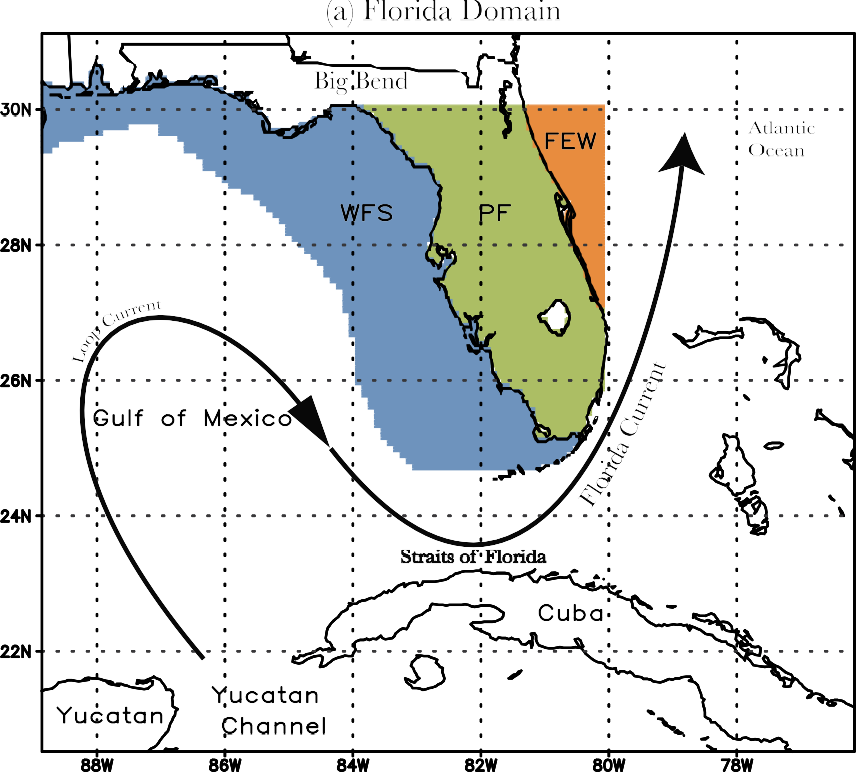
Experts agree that rising atmospheric temperatures and shifts in the global ocean make Florida’s future climate evolution uncertain and potentially precarious. But conventional, poorly resolved climate models have made it difficult to credibly project what may actually be in store for the Sunshine State.
While nobody can predict the future with perfect accuracy, meteorology researchers at Florida State University are getting closer. In two studies published earlier this year, they show that a novel projection strategy could be the key to demystifying Florida’s still mostly cloudy climate future.
“The question being asked by society is ‘what will happen in our ZIP code in a future climate?’” said FSU Professor of Meteorology Vasu Misra. “To create better policy, you need to see what the full climate is going through. But the majority of activity affecting you and me is happening at the ZIP code level. That’s where our studies will become more and more relevant.”
In a paper published in the Journal of Marine Systems, Misra and postdoctoral researcher Amit Bhardwaj’s forward-looking modeling approach showed that regional ocean current changes, compounded by rising atmospheric temperatures triggered by greenhouse gases, will warm the shallow waters of the West Florida Shelf, an area off Florida’s west coast. Eventually, warmer waters will result in more rain over the shelf and a drier, hotter summer season over peninsular Florida.
Those findings contradicted the projections from standard global climate projection models, which do a good job projecting macroscopic trends but have trouble at finer scales, according to Misra.
“We see in our model solutions that the West Florida Shelf more aggressively responds to future climate changes, which then seems to have an impact on the terrestrial climate of peninsular Florida,” Misra said. “Our future projections are showing that the wet season is going to get drier in a future climate.”
In a companion study published in the journal Climate Dynamics, the team broke down the projections into months, revealing again that the rainy Florida days of June, July and August will likely get drier, while more rain is set to inundate the West Florida Shelf.
These findings also stood in opposition to standard global climate model projections.
“The global model showed a slightly wetter summer season over Florida because it was not able to adequately distinguish the West Florida Shelf,” Bhardwaj said.

Rather than using coarser global climate projection models, which aren’t always able to resolve the topography of Florida’s coastal oceans or the distinct shape of the peninsula, Misra and Bhardwaj employed downscaled regional models that operate on high-resolution, 10-kilometer grids.
In addition to focusing the scope of their projections, Misra and Bhardwaj found that by coupling atmospheric and oceanic models, they were able to study the climate more comprehensively. This is particularly important when studying a dynamic system like the Loop Current, a region of warm water flowing from the Caribbean through the Gulf of Mexico that, the FSU researchers found, plays a significant role in Florida’s summer climate.
Global, uncoupled climate models, with their broader scope and limited variability, are less capable of projecting changes in peninsular Florida’s climate, Misra said, in part because they aren’t able to account for changes in the Loop Current and other smaller-scale ocean features.
“That is why we believe the way we are downscaling — using the atmosphere and ocean components simultaneously so that any change in the Loop Current will manifest — makes us somewhat unique,” he said.
And while Misra and Bhardwaj’s models can’t yet provide completely infallible, ZIP code-level climate predictions decades in advance, their innovative approach is bringing Florida’s climate future into sharper and sharper relief.
“We’re getting there,” Misra said. “People are getting down to very local levels to seek answers to these important questions. The demand is there, and we need to tap our resources.”
The researchers’ work was funded by the National Oceanic and Atmospheric Administration and the South Florida Water Management District.




